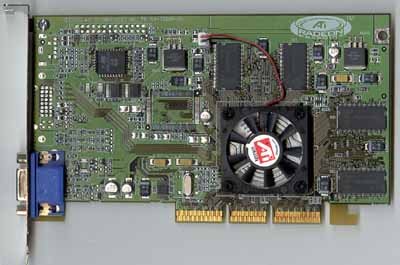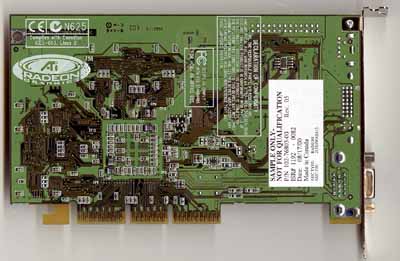Budget Video Card Comparison - November 2000
by Matthew Witheiler on November 27, 2000 3:20 AM EST- Posted in
- GPUs
The problem is that for all the power present in the Rage6C core, coupling it with nearly any existing memory bus cripples it. Even in the case of the Radeon DDR, the memory bus is a limiting factor in card speed. In order to help alleviate the immense stress encountered by the memory bus, ATI devised their HyperZ technology.
HyperZ is ATI's answer to the memory bandwidth bottleneck. Rather than rely on increasing memory speeds, ATI saw the opportunity to decrease some overhead normally present in 3D rendering. The result is what ATI calls HyperZ technology and is made up of three parts: Hierarchical Z, Z-Compression, and Fast-Z Clear. Each function of HyperZ acts upon the Z-buffer portion of memory, the part of memory dedicated to holding the z-values of rendered pixels. It is from these numbers that scene is rendered, according to each pixel's position on the z-axis. ATI's HyperZ technology optimizes access to the Z-buffer, thus speeding up the process of rendering by reducing the amount of data that needs to travel along the memory bus. For more in-depth discussion of HyperZ and its components, see our ATI Radeon 32MB SDR review.
It is clear that HyperZ plays a crucial role in all Radeon incarnations, however in the Radeon SDR it plays the most important role. Since the memory bus on the Radeon SDR is already "crippled" by using SDR memory instead of the DDR memory used in the Radeon DDR cards. Doing so effectively halved the available memory bandwidth on the 128-bit memory bus, reducing it to 2.7 GB/s. In this case, the numbers do not tell all. Since HyperZ is working to reduce the amount of data that would normally have to travel over the memory bus, the Radeon SDR actually has higher effective memory bandwidth. This is key to the success of Radeon SDR, since in all value cards memory bandwidth plays the greatest role. Often, it is a bottleneck on the memory bus that prevents optimal performance, not a slow core.
By including both a T&L engine courtesy of the Rage6C core as well as using HyperZ technology, the Radeon SDR is on the cutting edge, be it a budget card or not.












0 Comments
View All Comments